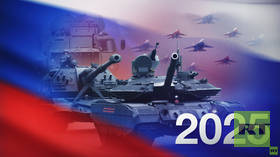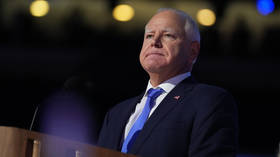
DALLAS- Southwest Airlines (WN) has become the first US carrier to deploy anti-terrorist cockpit barricades on new Boeing 737 MAX jets arriving from Seattle (SEA).
Unlike other airlines that have opted to delay usage until required by regulation, Southwest Airlines has chosen to activate the anti-terror barricade system immediately on its new aircraft.
 Photo: Southwest Airlines | Credit to PYOK
Photo: Southwest Airlines | Credit to PYOKSouthwest Anti-Terrorist Barricades
The new safety feature is known as an Installed Physical Secondary Barrier (IPSB). It is positioned between the forward galley and the main reinforced cockpit door.
The barrier is designed for deployment whenever the cockpit door is open during flight, such as when pilots step out to access the lavatory.
Until now, airlines have relied on beverage carts to block access during these brief moments, but the IPSB offers a more reliable safeguard. While not bulletproof or bombproof, the lightweight system delays intruders long enough to ensure cockpit security.
Reported by PYOK, the IPSB represents an additional security layer that has been discussed since the aftermath of the September 11 attacks.
 Photo: By Tomás Del Coro – https://www.flickr.com/photos/tomasdelcoro/49898991303/, CC BY-SA 2.0, https://commons.wikimedia.org/w/index.php?curid=103538454
Photo: By Tomás Del Coro – https://www.flickr.com/photos/tomasdelcoro/49898991303/, CC BY-SA 2.0, https://commons.wikimedia.org/w/index.php?curid=103538454Legislative Background and FAA Mandate
The idea of requiring secondary cockpit barriers emerged after 9/11. However, airlines resisted voluntary adoption, citing cost and logistical concerns.
In 2018, the FAA Authorization Act mandated IPSBs on all newly built commercial aircraft for US carriers.
Although the law was passed, implementation was slow. It was not until 2023 that the FAA issued the final rule requiring IPSBs on all new aircraft within two years. Due to industry lobbying, the FAA extended the deployment deadline to July 2026, citing training delays.
 Photo: Southwest Airlines
Photo: Southwest AirlinesWhy Southwest Airlines is Different
Most US carriers will wait until the 2026 deadline to activate IPSBs. They argued that a lack of training materials and FAA certification delays made early adoption impractical.
Southwest Airlines, however, chose to bypass the extension and deploy barriers immediately, signaling a proactive stance on aviation safety.
By the end of 2026, Southwest plans to take delivery of 25 new aircraft with IPSBs. This represents only 3% of its total fleet, meaning the majority of its aircraft will not feature the barriers until older jets are replaced.
Southwest’s IPSB is a bi-fold design placed between the galley and cockpit door. Other approved designs exist, with some creating a sealed “airlock” space between the cockpit and lavatory.
Despite FAA approval, aviation unions remain dissatisfied with the extension. The Air Line Pilots Association (ALPA) criticized the delay, warning that postponing IPSB deployment undermines security.
Airlines for America, the main industry lobbying group, initially pushed for a 24 month delay, but the FAA limited the extension to 12 months.
 Photo: ur-1988 | Credits to Creator
Photo: ur-1988 | Credits to CreatorConclusion
Southwest Airlines has set itself apart as the first US airline to use IPSBs in service on newly delivered Boeing 737 MAX aircraft.
While other carriers wait until 2026, Southwest has demonstrated a stronger commitment to cockpit security through immediate deployment.
Stay tuned with us. Further, follow us on social media for the latest updates.
Join us on Telegram Group for the Latest Aviation Updates. Subsequently, follow us on Google News
Southwest Airlines Pilot Arrested for Being Drunk Before Flight | New Update
The post Southwest Deploys Anti-Terrorist Cockpit Barricades on New 737 MAX appeared first on Aviation A2Z.


















